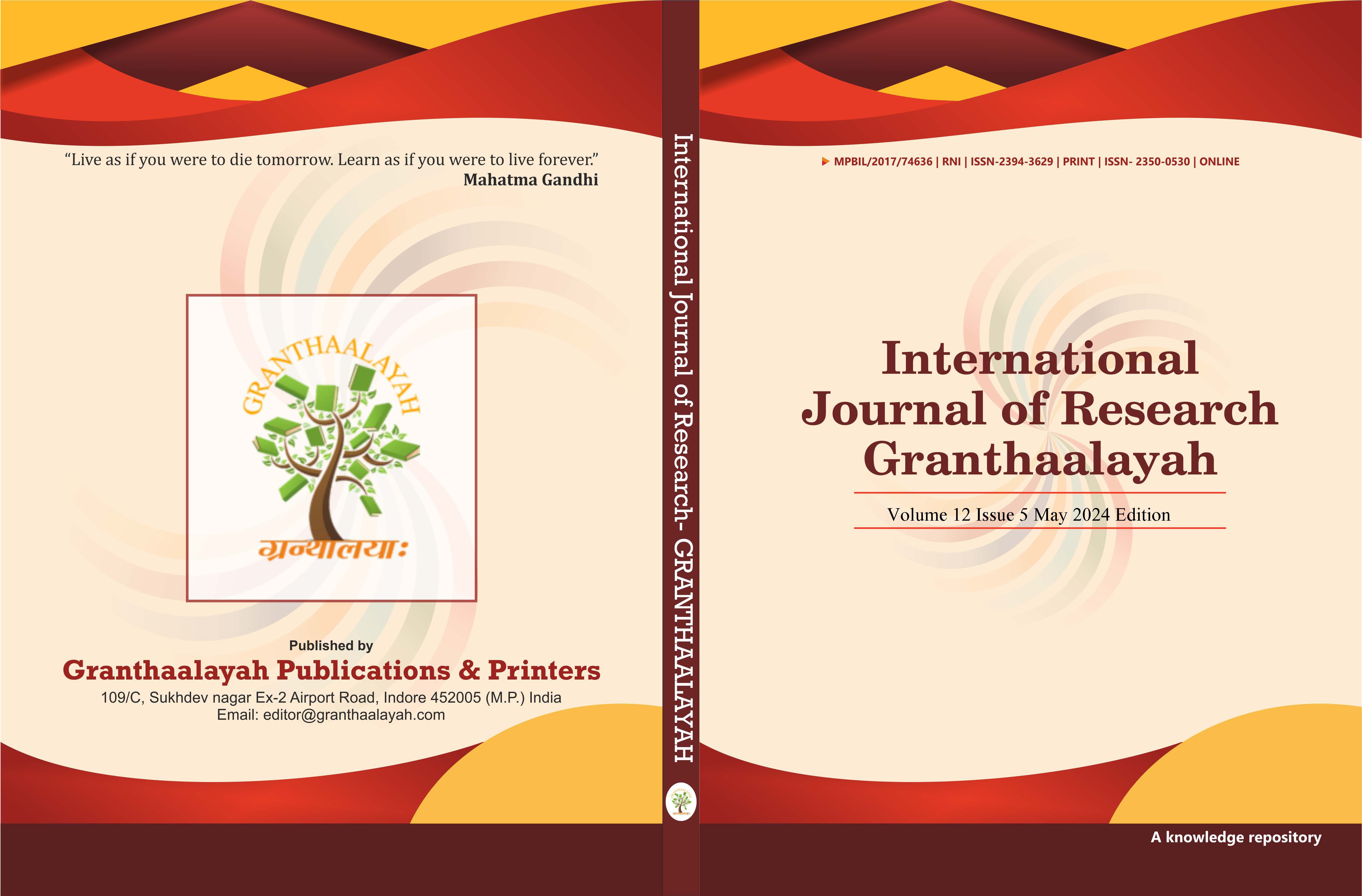REAL-TIME SENTIMENT ANALYSIS ON TWITTER USING LSTM FOR ENHANCED SOCIAL MEDIA MONITORING AND USER INTERACTION INSIGHTS
DOI:
https://doi.org/10.29121/granthaalayah.v12.i5.2024.6096Keywords:
Real-Time Sentiment Analysis, Lstm, Social Media, User Interaction, Online Reputation, Digital AgeAbstract [English]
In today's digital age, an online reputation is a crucial asset for any business. Poorly managed responses to negative reviews on social media can lead to significant costs and damage. Sentiment analysis provides an effective way to monitor and analyze online opinions, particularly in real-time, allowing businesses to track public sentiment regarding their products and services. This project leverages sentiment analysis on Twitter to harness the power of real-time data, enabling businesses to assess and respond to customer feedback promptly. By using Long Short-Term Memory (LSTM) models, this approach offers advanced capabilities in analyzing tweet sentiments, providing a deeper understanding of consumer sentiment and enhancing social media monitoring.
One key improvement of this project over existing tools is the focused collection of data exclusively from Twitter, reducing noise and minimizing the risk of false results caused by irrelevant data sources. By analyzing user interactions on social media, beyond basic metrics like likes, shares, and comments, sentiment analysis seeks to uncover the underlying emotions and motivations of consumers, providing valuable insights for brands, public figures, NGOs, governments, and educational institutions.
Existing sentiment analysis tools typically require a background in data science and advanced technical knowledge. However, this project introduces a user-friendly interface, allowing non-experts to easily access and interpret sentiment analysis results. The interface will display product reviews along with their corresponding sentiments, providing a seamless experience for the user. Additionally, the project incorporates a phrase-level sentiment analysis feature, which analyzes user-input phrases and predicts the sentiment behind them, offering a more granular and precise understanding of social media content.
Downloads
References
Agarwal, A., Xie, B., Vovsha, I., Rambow, O., & Passonneau, R. (2011). Sentiment Analysis of Twitter Data. Proceedings of the Workshop on Languages in Social Media, 30–38.
Cambria, E., Schuller, B., Xia, Y., & Havasi, C. (2013). New Avenues in Opinion Mining and Sentiment Analysis. IEEE Intelligent Systems, 28(2), 15–21. https://doi.org/10.1109/MIS.2013.30 DOI: https://doi.org/10.1109/MIS.2013.30
Feldman, R. (2013). Techniques and Applications for Sentiment Analysis. Communications of the ACM, 56(4), 82–89. https://doi.org/10.1145/2436256.2436274 DOI: https://doi.org/10.1145/2436256.2436274
Ghiassi, M., Skinner, J., & Zimbra, D. (2013). Twitter Brand Sentiment Analysis: A Hybrid System Using N-Gram Analysis and Dynamic Artificial Neural Network. Expert Systems with Applications, 40(16), 6266–6282. https://doi.org/10.1016/j.eswa.2013.05.057 DOI: https://doi.org/10.1016/j.eswa.2013.05.057
Giachanou, A., & Crestani, F. (2016). Like it or Not: A Survey of Twitter Sentiment Analysis Methods. ACM Computing Surveys (CSUR), 49(2), 1–41. https://doi.org/10.1145/2938640 DOI: https://doi.org/10.1145/2938640
Heer, J., & Shneiderman, B. (2012). Interactive Dynamics for Visual Analysis. Communications of the ACM, 55(4), 45–54. https://doi.org/10.1145/2133806.2133821 DOI: https://doi.org/10.1145/2133806.2133821
Hochreiter, S., & Schmidhuber, J. (1997). Long Short-Term Memory. Neural Computation, 9(8), 1735–1780. https://doi.org/10.1162/neco.1997.9.8.1735 DOI: https://doi.org/10.1162/neco.1997.9.8.1735
Hutto, C. J., & Gilbert, E. (2014). Vader: A Parsimonious Rule-Based Model for Sentiment Analysis of Social Media Text. ICWSM, 8(1), 216–225. https://doi.org/10.1609/icwsm.v8i1.14550 DOI: https://doi.org/10.1609/icwsm.v8i1.14550
Kouloumpis, E., Wilson, T., & Moore, J. (2011). Twitter Sentiment Analysis: the Good, the Bad, and the Omg!. ICWSM, 11(538–541), 164. https://doi.org/10.1609/icwsm.v5i1.14185 DOI: https://doi.org/10.1609/icwsm.v5i1.14185
Liu, B. (2012). Sentiment Analysis and Opinion Mining. Synthesis Lectures on Human Language Technologies, 5(1), 1–167. https://doi.org/10.1007/978-3-031-02145-9 DOI: https://doi.org/10.1007/978-3-031-02145-9_1
Loria, S. (2018). Textblob: Simplified Text Processing. [Online]. Available
Medhat, W., Hassan, A., & Korashy, H. (2014). Sentiment Analysis Algorithms and Applications: A Survey. Ain Shams Engineering Journal, 5(4), 1093–1113. https://doi.org/10.1016/j.asej.2014.04.011 DOI: https://doi.org/10.1016/j.asej.2014.04.011
Pang, B., & Lee, L. (2008). Opinion Mining and Sentiment Analysis. Foundations And Trends In Information Retrieval, 2(1–2), 1–135. https://doi.org/10.1561/9781601981516 DOI: https://doi.org/10.1561/1500000011
Tang, D., Qin, B., & Liu, T. (2014). Learning Sentiment-Specific Word Embedding for Twitter Sentiment Classification. Proceedings of the 52nd Annual Meeting of the Association for Computational Linguistics (Volume 1: Long Papers), 1555–1565. https://doi.org/10.3115/v1/P14-1146 DOI: https://doi.org/10.3115/v1/P14-1146
Thelwall, M., Buckley, K., & Paltoglou, G. (2011). Sentiment Strength Detection for the Social Web. Journal of the American Society for Information Science and Technology, 63(1), 163–173. https://doi.org/10.1002/asi.21662
Thelwall, M., Buckley, K., & Paltoglou, G. (2012). SEntiment Strength Detection for the Social Web. Journal of the American Society for Information Science and Technology, 63(1), 163–173. https://doi.org/10.1002/asi.21662 DOI: https://doi.org/10.1002/asi.21662
Tumasjan, A., Sprenger, T. O., Sandner, P. G., & Welpe, I. M. (2010). Predicting Elections With Twitter: What 140 Characters Reveal About Political Sentiment. ICWSM, 10(1), 178–185. https://doi.org/10.1609/icwsm.v4i1.14009 DOI: https://doi.org/10.1609/icwsm.v4i1.14009
Wallace, B. C., Choe, D. K., Charniak, E., & Smith, M. (2014). Humans Require Context To Infer Ironic Intent (So Computers Probably Do, Too). Proceedings of the 52nd Annual Meeting of the Association for Computational Linguistics, 512–516. https://doi.org/10.3115/v1/P14-2084 DOI: https://doi.org/10.3115/v1/P14-2084
Published
How to Cite
Issue
Section
License
Copyright (c) 2024 Jatin Gupta, Vipanshu Sharma, Yash Kumar, Shefali Madan

This work is licensed under a Creative Commons Attribution 4.0 International License.
With the licence CC-BY, authors retain the copyright, allowing anyone to download, reuse, re-print, modify, distribute, and/or copy their contribution. The work must be properly attributed to its author.
It is not necessary to ask for further permission from the author or journal board.
This journal provides immediate open access to its content on the principle that making research freely available to the public supports a greater global exchange of knowledge.






























